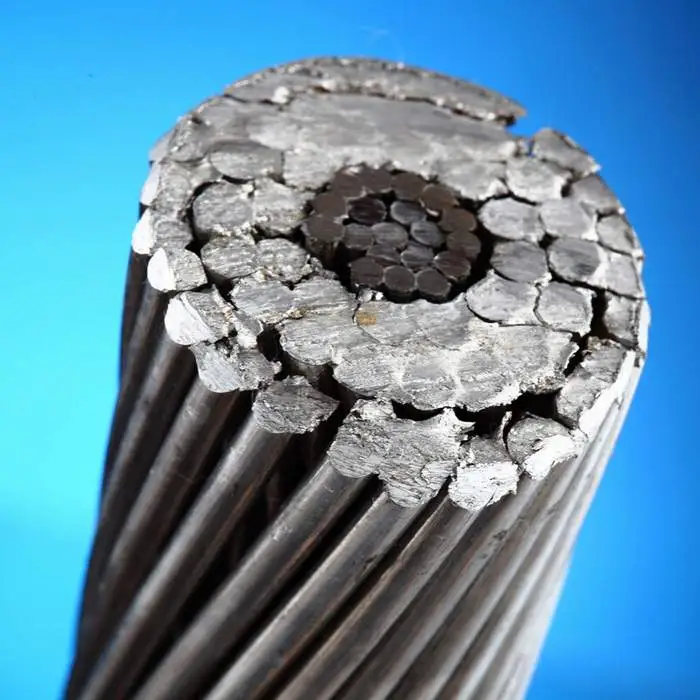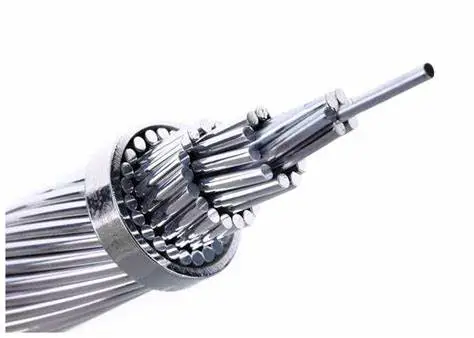Introduction of Conductor Aluminum
Conductor aluminum has become a practical substitute for a number of electrical applications, although materials like copper and silver have long dominated the field of electrical conductivity. We shall explore the characteristics of conductor aluminum to clear out why it is a good conductor aluminum. We will delve into the conductivity, affordability, resistance to corrosion, thermal performance, environmental factors, applications, and difficulties that conductor aluminum meets. By the end of this essay, you will understand why aluminum has become known as a great material for conductors.

Properties of Conductor Aluminum
Aluminum is a lightweight metal with excellent physical and chemical characteristics. It has a low density, making it importantly lighter than copper, one of the most commonly used conductors. Although its lightweight nature, conductor aluminum shows decent electrical conductivity, making it an attractive choice for conducting electricity. What’s more, conductor aluminum has excellent malleability and ductility, allowing it to be easily shaped and formed into many kinds of conductor configurations.
Conductivity of Conductor Aluminum
When discussing conductor aluminum, one of the key aspects to consider is their electrical conductivity. While conductor aluminum’s conductivity is lower than that of copper or silver, it is still sufficient for many electrical applications. In fact, conductor aluminum has approximately 61% of the electrical conductivity of copper. This means that a larger cross-sectional area of aluminum is required to achieve the same electrical conductivity as copper. However, due to aluminum’s lighter weight, it can still offer cost and performance advantages in certain scenarios.

Cost-effectiveness of conductor aluminum
Conductor aluminum are known for their cost-effectiveness compared to copper conductors. Aluminum is abundantly available, making it less expensive than copper. The lower cost of conductor aluminum allows for significant savings in large-scale electrical projects, where the cost of materials can be a significant factor. Furthermore, conductor aluminum require less supporting infrastructure due to their lighter weight, reducing installation and maintenance costs.
Corrosion Resistance of conductor aluminum
Aluminum naturally forms a thin oxide layer on its surface, which provides inherent corrosion resistance. This oxide layer protects the conductor aluminum from environmental factors, such as moisture and oxygen, that can cause corrosion. In contrast, copper requires additional coatings or insulation to protect against corrosion. Conductor aluminum are particularly advantageous in coastal or humid environments where corrosion can be a significant concern, making it a reliable and durable choice. The 3000 series anti-rust aluminum alloy is worth mentioning. The 3000 series aluminum alloy includes 3003 aluminum alloy, 3004 aluminum alloy, 3005 aluminum alloy, etc.

Thermal Performance
Aluminum exhibits excellent thermal conductivity, allowing for efficient heat dissipation. This property makes conductor aluminum suitable for applications that involve high temperatures or heavy electrical loads. Aluminum’s superior thermal performance helps to prevent overheating and ensures the longevity of electrical systems. In comparison, other materials may require additional cooling measures or insulation to achieve similar thermal stability. The 5000 series aluminum alloy is also widely used in the automation industry.
Environmental Considerations
Concerns about sustainability and environmental impact have become increasingly important. Conductor aluminum offer several environmental advantages. Firstly, aluminum is abundantly available in the Earth’s crust, making it a sustainable resource. Additionally, aluminum is highly recyclable, allowing for the conservation of resources and reduction of waste. The use of conductor aluminum in electrical systems aligns with the goals of promoting green energy and reducing carbon footprints.

Applications of Conductor Aluminum
Conductor aluminum find extensive use in power transmission and distribution networks. They are commonly employed in overhead power lines and substations due to their lightweight nature and cost-effectiveness. Conductor aluminum are also utilized in renewable energy systems, such as solar and wind power, to efficiently transmit generated electricity. Furthermore, conductor aluminum have found applications in aerospace and transportation industries where weight reduction is crucial.
Challenges and Limitations
While conductor aluminum offer numerous advantages, they do face some challenges and limitations. Jointing conductor aluminum can be more complex than copper due to aluminum’s lower mechanical strength. Special care must be taken during installation to ensure secure and reliable connections. Additionally, compatibility issues may arise when connecting aluminum conductors to other materials, requiring proper insulation and jointing techniques. These challenges can be overcome with proper design, installation, and maintenance practices.

Summary
Aluminum has established itself as a practical substitute for conventional conductors such as copper. Its characteristics, encompassing conductivity, affordability, resistance to corrosion, thermal efficiency, and ecological aspects, render it an appealing option for aluminum conductors. Although aluminum does present certain obstacles and restrictions, they can be overcome by employing appropriate engineering and installation methodologies. As the global pursuit of sustainable and effective solutions persists, aluminum conductors will assume a vital position in the advancement of electrical systems. They will facilitate dependable power transmission and distribution while enhancing cost efficiency and promoting environmental sustainability.

FAQ
Can aluminum foil be used as a conductor of electricity?
Yes, aluminum foil can conduct electricity. In fact, it is considered a good conductor of electricity due to the presence of free electrons in its atomic structure. When a potential difference is applied across aluminum foil, the free electrons start to move in response to the electric field. This movement of electrons creates a flow of electric current through the foil. However, it is important to note that aluminum foil has lower conductivity than copper. Therefore, if you are planning to use aluminum foil as a conductor material, you will need a wire size that is approximately one-third larger than that of a copper wire.
Why is aluminium used in electrical engineering?
Aluminum has been used for many years as a conductor material in almost all branches of electrical engineering. In addition to pure aluminum, several of its alloys are also excellent conductors, combining structural strength with quite acceptable conductivity. Aluminum is used everywhere in the electrical industry. Motors are wound with it, high-voltage lines are made with it, and the drop from the power line to your house’s circuit breaker box is probably aluminum. The material is lighter than copper (about one-third the density) and therefore easier to handle; it is also cheaper. Another advantage is that its price is not subject to wide fluctuations as is copper. There was a sharp increase in the price of copper worldwide in the 1960s and 1970s. This led to many instances of aluminum being used in situations where copper had previously been the norm. In a few applications, such as domestic wiring and transformer foil-windings, aluminum proved to be less suitable than was initially hoped, so in the late 1990s there has been some return to copper, and the use of aluminum has tended to be restricted to those applications for which it is clearly superior.


